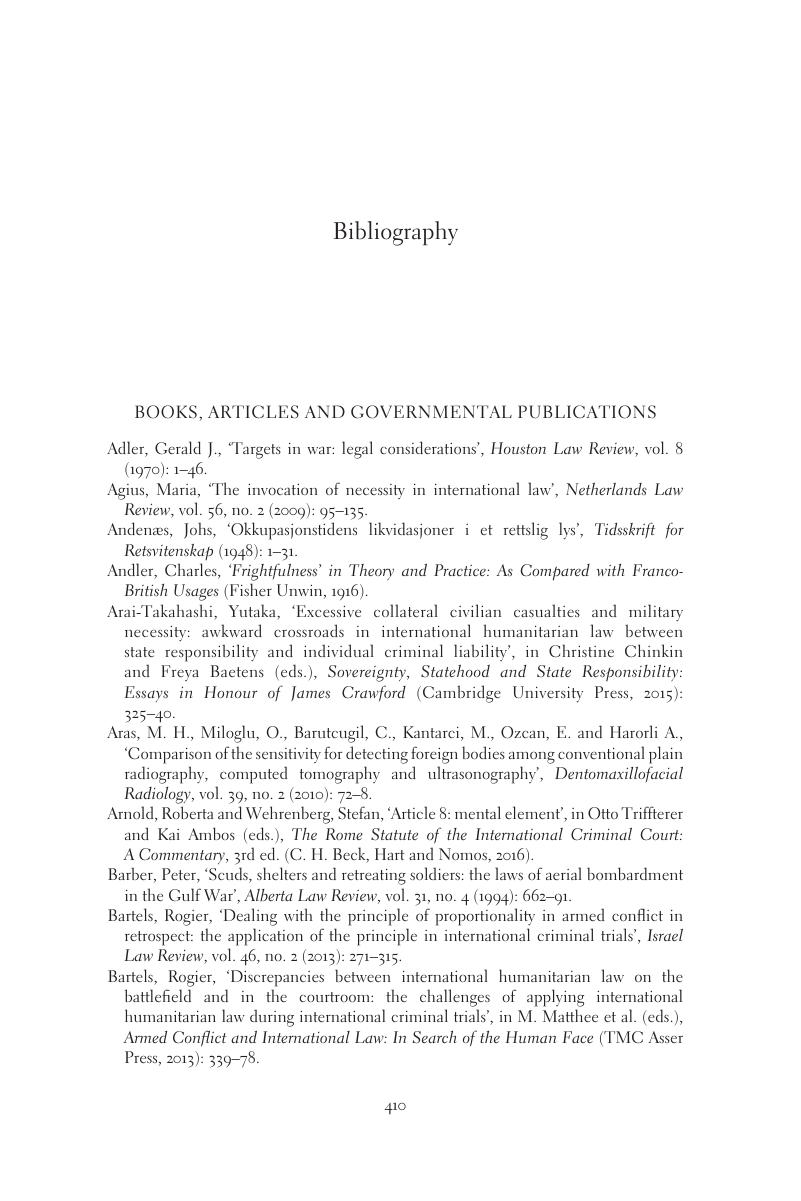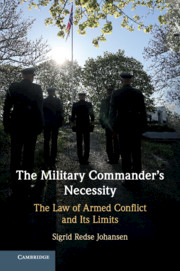Book contents
- The Military Commander’s Necessity
- The Military Commander’s Necessity
- Copyright page
- Dedication
- Contents
- Preface
- Table of Cases
- Table of Treaties
- 1 Introduction
- Part I Concept, History and Basics
- Part II Distinction As Limitation upon Military Necessity in the Law of Armed Conflict
- Part III Effectuating Distinction: Enforcing an Ultimate Balance between Necessities of War and Considerations of Humanity
- Part IV The Exceptive Face of Military Necessity
- Part V Conclusions
- Bibliography
- Index
- References
Bibliography
Published online by Cambridge University Press: 30 September 2019
- The Military Commander’s Necessity
- The Military Commander’s Necessity
- Copyright page
- Dedication
- Contents
- Preface
- Table of Cases
- Table of Treaties
- 1 Introduction
- Part I Concept, History and Basics
- Part II Distinction As Limitation upon Military Necessity in the Law of Armed Conflict
- Part III Effectuating Distinction: Enforcing an Ultimate Balance between Necessities of War and Considerations of Humanity
- Part IV The Exceptive Face of Military Necessity
- Part V Conclusions
- Bibliography
- Index
- References
Summary

- Type
- Chapter
- Information
- The Military Commander's NecessityThe Law of Armed Conflict and its Limits, pp. 410 - 425Publisher: Cambridge University PressPrint publication year: 2019



